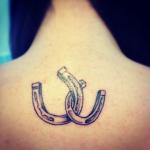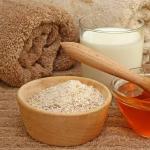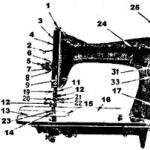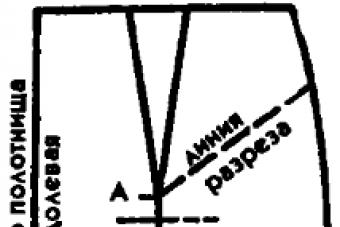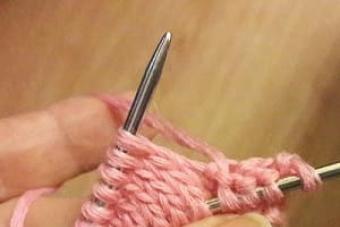Svetlana Shmakova



Goal: developing children's ideas about shoes.
Direction “Cognitive and speech development”
Educational area "Cognition"
NOD - “Clothing Store” (Shoes) - continue to form in children an idea about shoes and their necessity for human life, their purpose and functions depending on the time of year, weather conditions, age, gender of a person. Cultivate a caring attitude towards shoes.
Observing seasonal changes in people's and children's shoes while dressing for a walk.
Goal: learn to name shoes, activate children’s speech. Why with the onset of autumn we put on more warm shoes. What can happen if the shoes are out of season.
- “What kind of shoes did you wear before?”
- “What am I wearing?” – continue to form children’s ideas about shoes and their purpose in human life. (“Complex classes with children 4-7 years old.” Gorbatenko O. F., p. 38.)
Educational field "Communication"
NOD - “I’ll teach my brother how to put on shoes” - continue to introduce children to household items, teach them to identify a feature: color, material from which the thing is made. Develop children's speech by enriching new words on the topic of the lesson.
D\game “Repeat like me” - teach children to repeat the names of shoes and clothes after the teacher, developing children’s auditory attention, teach them to clearly pronounce words loudly or quietly, and correctly place emphasis.
And\ex. “I walk through mud” (page 22 of the book “Show the poems with your hands”)
Educational field "Reading fiction"
K. Chukovsky “The Miracle of a Tree” (Book for reading for 2-4 years, p. 163)
E. Blaginina “I’ll teach my brother how to dress too” (Anthology for little ones, p. 158)
F. Levstik “Who sewed Videk’s shirt” (Anthology for little ones, p. 204)
Memorization:
M. Yasnov “Counting with a shoe” (Book for reading 2-4 years, p. 175)
Direction "Artistic and aesthetic development"
Educational field "Artistic creativity"
GCD - “Miracle Tree” based on the work of K. Chukovsky - to develop children’s interest in artistic creativity, the desire to make teamwork on the theme of the work of art.
Independent art activity “Let’s paint the shoes”
Direction “Social and personal development”
Educational field "Socialization"
Role-playing game “We are going to the store for new shoes”
Exercise children in independent organization of play, develop the ability to establish role relationships.
Didactic game “Cut pictures”
Develop the ability to assemble a whole image of an object from parts.
Construction and design activity "Trading shoe tent"
Teach children to build from large and small builders, work in a certain sequence, learn to decorate a building using parts different color, beat the building.
Interaction with parents
Take a close look with your children different types shoes, determine what material it is made of and what its purpose is.
Play games that develop children's speech:
"One is many"
Boot-boots,
Sandals - sandals,
Felt boots - felt boots,
Czechs - Czechs,
Slippers - slippers.
"Big small"
Boots - boots;
Slippers - slippers;
Shoes - shoes;
Felt boots - felt boots,
Learn and play the finger game “Our Shoes”
Let's count for the first time,
how many shoes do we have:
(alternately clap hands and bang fists)
Shoes, slippers, boots,
for Natasha and Seryozha,
(bend all fingers one by one)
And even boots for our Valentine,
And these boots are for little Galenka.
Short-term project for the middle group on the topic: “Clothes, shoes, hats.”
A brief outline of a project for a week at a preschool educational institution for the middle group on the topic “Clothes, shoes, hats”
Target: to form ideas about clothing, shoes, hats, their purpose, use and care.
Tasks:
Cognitive development
-form elementary representations about clothes: clothes can be sewn, knitted, bought; There are festive, uniform and casual clothes, as well as for sleep, sports, home, etc.
-learn to find differences between pieces of different fabrics.
- lead to the practical development of the concept of “part and whole”
Speech development
-develop the ability to describe a toy, name its features, and connect sentences with each other;
-practice in the use of singular and plural forms of nouns;
-form ideas about prepositions for, under, on, in, skills of their use in speech.
Social and communicative development
- teach children to use knowledge about clothing, to activate generalizing concepts in speech (underwear, outerwear, etc.) names of parts of clothing;
- teach children to choose clothes by size and gender;
- update and supplement children’s knowledge about what material various objects are made of, teach them to correctly use the appropriate adjectives in speech;
-develop the grammatical structure of speech and enrich vocabulary.
Physical development
- develop fine and gross motor skills;
- acquiring experience in motor activity aimed at developing coordination of movements, performing basic movements according to the quoted text;
- formation of cultural and hygienic skills.
Artistic and aesthetic development
- learn to draw an image of what is planned on paper;
- develop singing skills while learning and listening to songs.
- intensify techniques for decorating stucco crafts;
Expected results of the project:
1) Children will develop knowledge about clothes, shoes, hats, their purpose, use and care for them.
2) An appropriate subject-development environment will be created.
3) The activity of parents in joint creative activities will increase.
Plan
Monday
1. Conversation “Does the clothes that a child would like to wear in the morning differ from what he put on, and what does he associate it with? Why did he agree to change his choice?
- develop the ability to answer questions and write a short story about what students wear at home and what clothes they wear outside;
- form an idea of how the season affects the choice of clothing.
2. Lesson “Clothing store for dolls”
- show the functional purpose of items of clothing, shoes, hats, referring to the realities of children’s lives
- give an idea that clothes are selected depending on weather conditions
-form basic ideas about clothing: clothes can be sewn, knitted, bought; There are festive and casual clothes, as well as for sleep, sports, etc.
- learn how to ask for help correctly
3. Didactic game"Let's dress the doll"
- teach children to use knowledge about clothing, to activate in speech general concepts (underwear, outerwear, etc.) names of parts of clothing.
4.Reading the book by K. Chukovsky “Moidodyr”
- to form cultural and hygienic skills and the habit of looking after one’s appearance;

Tuesday
1.Learning the song “The Raccoon Became a Shoemaker”
- teach listening musical composition, memorizing the text;
- form an idea of the shoemaker profession;
2. Printed board game “Loto, professions”
- develop the ability to select and distinguish between professions based on workwear
3. Role-playing game “Clothing Store”:
plot “We buy clothes for various dolls”
- to develop children’s ability to select clothes by size and gender;
- be able to establish friendly relationships with peers,
support role-playing dialogues.
4. Experimental activity “Look at pieces of different fabrics, find differences”
- develop fine motor skills through tactile sensations;
- develop the ability to distinguish material.

Wednesday
1.Construction games “Building a clothing store”
-to develop children’s skills to carry out three-dimensional construction collectively, to coordinate their actions with the actions of other players;
-develop the ability to play with the construction.
2. Didactic game “What is made of what”
- update and supplement children’s knowledge about what material they are made of
made various items;
- learn to use appropriate adjectives correctly in speech;
- develop the grammatical structure of speech and enrich the vocabulary.
3. Role-playing game “Family”: the plot “We have a big wash”
- help children use familiar play actions;
- form an idea that different clothes consists of different fabrics and must also be washed in different ways;
- expand children's understanding of various types labor.

Thursday
1.Learning movements to the lyrics of the song “The Raccoon Became a Shoemaker”
- develop the ability to move to music, conveying the meaning of words through movements;
- continue to help understand what a shoemaker does and how he works;
- develop logical thinking.
2. Lesson “Observing the clothes of peers
- instill the habit of monitoring a friend’s appearance;
- develop the ability to distinguish the gender of a child by clothing;
- form an image of your “I”;
- to activate in speech the names of items of clothing, their characteristics (fur hat, etc.).
3. Artistic and creative activity “What would I buy for myself in a clothing store”
-develop imagination
-develop the ability to draw an image of what is planned on paper

1. “Bye-bye, go to sleep”
- develop the ability to sculpt images of sleeping toys in the style of “diapers”, tell that a diaper can be clothes for a baby;
- intensify techniques for decorating stucco crafts;
- show the possibility of creating compositions in small boxes - cradles
- cultivate a sense of form and composition;
- develop fine motor skills.
2. Theatrical activity “Fashion Show”
-develop the ability to show a new piece of clothing, made with your own hands together with your parents, and talk about it.

3. Household work
- to develop the ability in children to notice disorder in clothes, put clothes and shoes in order, and develop the appropriate skills.
- learn to help each other
Working with parents
1. Collection of visual material (pieces of different fabrics,
2. Learning a poem about clothing suggested in the recommendations, etc.
3. Replenishing the book corner with children's fashion magazines
4. Together with the children, make clothes from scrap materials for the final event (“Defile”)
5. Conversation between parents and children on the topic of the week
At the age of 2-3 years, visual perception actively develops. What the adult is talking about should always be in the child’s field of vision. Introducing children to clothes and shoes, the teacher not only shows pictures, but also invites them to examine their own clothes, the clothes of their peers, and the clothes of adults. In game situations, the names of clothes and shoes and the sequence of dressing and undressing are reinforced. The teacher teaches the kids to put things in their places and take care of their clothes. The content of game situations, poems and nursery rhymes for dressing up can be found in the appendix to the plan " Thematic week"Clothes and shoes."
Social and communicative development
In the field of social and communicative development, work continues to develop self-service skills. The teacher plans the game situation “Tell someone else that they can’t do this,” the game “We are going on a tram,” and other exercises aimed at developing children’s communicative qualities.
Cognitive development
An adult encourages children to match boots to dresses by color, put together half-pictures depicting clothes and shoes, looks at birds while walking, offers to play with natural material, which contributes cognitive development children of the younger group.
Speech development
Organizing work on speech development an adult recites poems about clothes, talks about winter shoes, plans theatrical performances that activate and enrich children's vocabulary.
Artistic and aesthetic development
In the field of artistic and aesthetic development, it is planned to get acquainted with, finger painting “Polka Dot Dress”, the game situation “The Bunny Brought Bricks”, independent games with musical instruments and much more.
Physical development
The teacher introduces the children to the game “A Little White Snow Fell” and continues to teach them to walk in a straight line, run without bumping into a certain direction. The adult repeats the games he likes with the children, creating conditions for physical development.
Check out a fragment of the theme week
Monday |
|||||
| OO | Cognitive development | Speech development | Physical development | ||
| 1 p.d. | Exercise “Show your towel.” Goal: learn to recognize your towel and dry your hands correctly. | Entering a thematic album: “Clothing. Shoes. Hats". Goal: to enrich children’s vocabulary with names of clothes, to develop the ability to carefully examine images. | Game "Quiet - Loud". Goal: to develop the vocal apparatus, to practice the skill of quiet and loud pronunciation of words. | Drawing with pencils. Goal: to teach children to hold a pencil in their hand correctly. | P.i. "Across the stream." Goal: to develop the ability to jump over landmarks on the floor. |
| Pro- boom | Examination of the kindergarten building. Goal: to draw attention to the beauty and design of the garden, to create a desire to visit the garden. | Observation of older children. Goal: to cultivate interest in attending kindergarten. | Finger game "Shoes". Goal: to promote the development of speech and fine motor skills. | Game “Find the same one” (based on the topic of the week). Goal: to develop the ability to follow the instructions of an adult, to select identical images. | P.i. "Sparrows and the car." Purpose: to train children in running, to form motor activity. |
| OD | |||||
| 2 p.d. | Game "Locomotive". Goal: learn to respond to your name, remember the names of peers, act according to demonstration and verbal instructions. | Planting onions. Goal: to teach children to stick bulbs into the ground, to educate positive attitude to work. | Looking at pictures based on the fairy tale “Turnip”. Goal: develop the ability to look at pictures and answer the teacher’s questions. | Listening to children's songs chosen by the teacher. Goal: to promote the development of musicality. | Game "Ring the bell". Goal: to train children in jumping, to develop interest in outdoor games. |
Tuesday |
|||||
| OO | Social and communicative development | Cognitive development | Speech development | Artistic and aesthetic development | Physical development |
| 1 p.d. | Introducing an algorithm for dressing for a walk. Goal: to introduce children to the correct dressing sequence. | Board game “Match the boots to the dress.” Goal: to develop color perception, the ability to select a pair by color. | Game situation “Visiting grandma” Purpose: to teach to recognize pets in toys and pictures. | Independent activity with plasticine. Goal: to continue familiarization with the properties of plastic materials. | Game "Little feet walked along the path." Goal: develop the rhythm of the step, learn to play together, not push. |
| Pro- boom | Game situation “Tell the other person that you can’t do that.” Goal: to cultivate a negative attitude towards rudeness, to develop a desire to communicate with peers. | Crow observation. Goal: to introduce children to the structural features of birds, to instill an interest in nature. | Repetition of finger games at the teacher's choice. Goal: to bring children joy from communication, to activate speech. | Game situation “Let’s help the bear give tea to the guests.” Goal: learn to name the colors of objects, perform several actions with an object. | P.i. "On a level path." Goal: to train children in balance, to cultivate interest in joint outdoor games. |
| OD | |||||
AINUR Kurbanova
Calendar-themed week “Clothes, shoes, hats” in middle group
CALENDAR THEMED WEEK« Cloth, shoes, hats».
Middle group
Subject weeks:
Target: Introducing the names of upper items clothes, shoes, hats; formation of children's cognitive interest in subjects clothes.
Tasks:1. Introduce children to the history of the origin of things.
2. Teach to distinguish things by seasonality, place of use, affiliation.
3. Learn how to care for your own wardrobe items and shoes.
1 half day.
Reception of children. Conversation about the weather. Filling weather calendar. Appointment of duty officer.
Breakfast. Reminder conversation "Table Rules".
Board-printed games. Target
Construction games "We're building a store clothes»
To develop children’s skills to carry out three-dimensional construction collectively, to coordinate their actions with the actions of other players;
Develop the ability to play around with a building.
Morning exercises
Direct educational activities.
Cognitive development (FCCM). « Shoes, hats» . Target: Introduce the names of objects shoes, hats; teach to compare objects, introduce the components of objects; develop thinking. (Complex classes by T. S. Komarova Middle group page. 139)
Physical Culture
Walk. Observation “How are passers-by dressed?”
Draw children's attention to how passers-by are dressed. Remember how they were dressed in the summer.
Outdoor games. "Living Labyrinth"."Don't get your feet wet".
Games on the playground at the request of the children. Target: Encourage children’s desire to organize play with peers, teach how to arrange a place for play, select attributes, and implement the game plan.
Buildings made of snow.
2 half day.
clothes for the high chair
Reading a fairy tale "Living Hat".
Looking at pictures of national costumes.
Contest “Who can color the princess’s dress better?”.
Repetition of poems for the New Year's Eve matinee
Free play activity.
Children leaving home.
Interaction with parents: Consultation for parents « Child's clothes in the group» .
Conversation about the weather. Filling weather calendar. Appointment of duty officer.
Morning exercises.
Conversation: “What are they made of? shoes, hats». Target:To form children’s ideas about qualities and properties, purpose and function items: shoes, hats, establish their gender assignment.
Didactic game "What is made of what"Target: update and supplement children’s knowledge about what material various objects are made of; teach them to correctly use appropriate adjectives in speech; develop grammatical structure of speech and enrich vocabulary.
Repetition of poems for the New Year's Eve matinee
.Target
Educational activities
Cognitive development (FEMP)
Music according to the plan of the muses. hands
Walk. Observation. determining the weather by signs. Target: Learn to independently determine the weather and show its influence on flora and fauna.
Labor activity: Sweeping paths on the site. Target
Outdoor games:"The Mother Hen and the Chicks".Target: Develop attention, speed and dexterity in children.
"By the Bear in the Forest". Target: Continue teaching children to run in different directions without bumping into each other. To develop children's imagination and ability to take on a certain role. Arouse interest in the game.
Snow buildings
2 half day.
Health-improving gymnastics, walking along a massage path.
Learn to consistently undress and dress, fold carefully clothes for the high chair
Games in the theater corner (children's choice).Target: Arouse in children the need for emotional communication.
Choose a word." Target:Develop intelligence, ability to select the right words according to the meaning of the word.
Speech development:ABOUT. Grigorieva “Like boots ate porridge”.
Role-playing game "Family": plot “We have a big wash”
Help children use familiar play actions;
Form an idea of what is different cloth consists of different fabrics and must also be washed in different ways;
Expand children's understanding of different types of work.
Repetition of poems for the New Year's Eve matinee
Independent motor activity. Target: Teach children to organize games independently, find activities of interest.
Walk. Weather observation.
Labor activity:Cleaning equipment after games. Target: Teach children to perform appropriate labor operations, pay attention to the results of work.
Outdoor games:"Mousetrap".Goals: Develop speed and endurance; run without touching each other, find your place. "From bump to bump".Goals: Develop long jump skills; develop dexterity.
Conversation about the weather. Filling weather calendar. Appointment of duty officer.
Morning exercises.
Conversation: "How to take care of your shoes?» . Target:Broaden the horizons of children; develop children's active speech, enrich their vocabulary.
Experimental activities “Look at pieces of different fabrics, find the differences”target: develop fine motor skills through tactile sensations; develop the ability to distinguish between materials.
Repetition of poems for the New Year's Eve matinee
Construction games
Target: Learn to analyze a sample building (identify the main parts, distinguish and correlate them by size and shape, create buildings commensurate with the existing toys.
Educational activities
Physical Culture
Speech development. Sound culture speeches: sound ts. Target: Exercise children in pronouncing the sound ts (isolated, in syllables, in words). Improve intonation expressiveness of speech. Learn to distinguish words beginning with the sound t, focusing not on the meaning of the word, but on its sound. (V.V. Gerbova Lesson 2 p. 36)
Walk. Observing the length of the day. Target: Develop the ability to make connections between the length of day and night and lighting.
Labor activity Target: Accustom to neatness
.Outdoor games:"Sparrows and the Cat".Target “Catch-up dashes”.Target
Snow buildings
2 half day.
Health-improving gymnastics, walking along a massage path.
Learn to consistently undress and dress, fold carefully clothes for the high chair
Board-printed games. Target: clarify children’s understanding of the rules of familiar games, offer to tell the rules. Teach children to play in pairs, taking turns playing the roles of organizer, player, checker
Role-playing game "Workshop shoes» .
Target: Continue to teach children to transfer to
game of everyday scenes.
Form a desire and encourage the use of substitute toys. Developing the ability to interact
in a collective game.
Repetition of poems for the New Year's Eve matinee
Master Class: Making crafts for the New Year together with parents.
Walk
Labor activity: Snow removal on the veranda.
Outdoor games:"Who is first". Target:Teach children to listen carefully to words and perform movements based on them. "Aircraft".Target: Learn to move easily, act after the signal.
Conversation about the weather. Filling weather calendar. Appointment of duty officer.
Morning exercises.
Repetition of poems for the New Year's Eve matinee
Conversation: "Origin story". Target:Introduce children to the origin story shoes and hats.
Speech development: M. Yasnov "Counting with a shoe".
Educational activities
Application. "Kerchief for nesting dolls". Target: Learn to cut squares diagonally to obtain two triangles, combine them by color, reinforcing the techniques of gluing and patterning. (Z. A. Bogateeva Applique classes in kindergarten page 78)
Music according to the plan of the muses. hands
Walk. Bird watching. Goals: Continue bird watching in the area; learn to distinguish the main parts of the body; develop and cultivate a caring attitude towards birds.
"Get in the circle". Goals: Improve the ability to act with different objects; develop the ability to throw objects in a certain direction with both hands; develop eye, coordination, dexterity.
Games with external material.
Games and buildings made of snow.
P.I. on the initiative of children.
2 half day.
Health-improving gymnastics, walking along a massage path.
Learn to consistently undress and dress, fold carefully clothes for the high chair
Finger games. Target: Help create a joyful mood in children, draw attention to the rhythmic sound of words and intonation vote. Continue teaching imitative play actions.
Writing a descriptive story. Target: Learn to write a descriptive story with the help of a teacher.
Speech development: A. Pysin "Weird boots?".
Repetition of poems for the New Year's Eve matinee
Walk
Labor activity: Putting the area in order. Target: Accustom to accuracy.
Outdoor games:"Sparrows and the Cat".Target: Learn to run without touching each other, run away quickly, find your place. “Catch-up dashes”.Target: Learn to coordinate your actions with the actions of your comrades.
Games and buildings made of snow.
Conversation about the weather. Filling weather calendar. Appointment of duty officer.
Morning exercises.
Repetition of poems for the New Year's Eve matinee
Conversation: « Shoes, hats» .Target:Consolidate knowledge of the names of objects shoes, hats.
Board-printed games.
Target: Encourage children’s desire to master the rules of the simplest printed board games, teach them to obey the rules in the game.
Educational activities
Drawing. "Decorate the boots". Target: To consolidate the ability to decorate boots using lines, strokes, dots, circles and other familiar elements. Develop aesthetic perception, independence, initiative. (T. S. Komarova Lesson on visual arts in kindergarten p. 55)
Physical education "Observation of clothes peers - instill the habit of monitoring a friend’s appearance; - develop the ability to distinguish the gender of a child by clothes;- form an image of yourself "I";-activate the names of objects in speech clothes, their characteristics (fur hat, etc.).
Walk.
“It happens - it doesn’t happen” (with a ball) Target: Develop memory, thinking, reaction speed
Labor activity
Cleaning the area.
Target: To teach to work together, to achieve the completion of a task through joint efforts.
Games with external material. Buildings made of snow.
2 half day.
Health-improving gymnastics, walking along a massage path.
Learn to consistently undress and dress, fold carefully clothes for the high chair
Repetition of poems for the New Year's Eve matinee
Construction games. Target: Learn to analyze a sample building (identify the main parts, distinguish and correlate them by size and shape, create buildings commensurate with existing toys
Independent play activities of children, story games (children’s choice of games based on their interests).Target: Expand the scope of children’s independent actions in choosing a role. Learn to team up in games with peers, conduct role-playing dialogues, take initiative and propose new roles or actions.
Walk. Labor activity:Cleaning equipment after games. Target: Teach children to perform appropriate labor operations, pay attention to the results of work.
Outdoor games:"Counter dashes".Goals: Increase physical activity; develop accuracy, agility, endurance.
"We are funny guys". Target: Learn to run in a straight direction, see someone running in front and next to you, coordinate your actions with the actions of other children.
Buildings made of snow.
